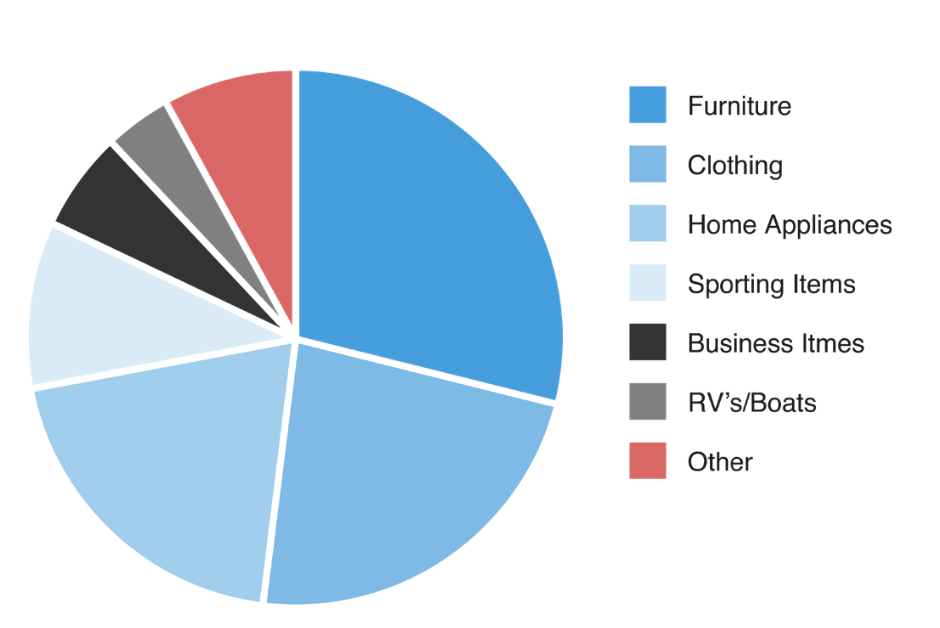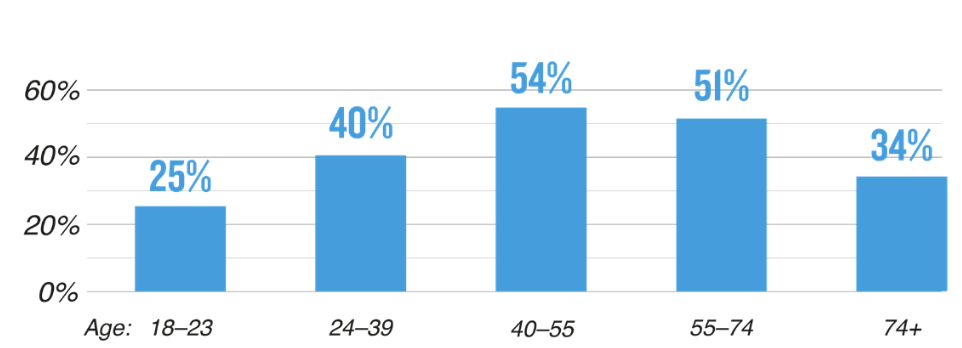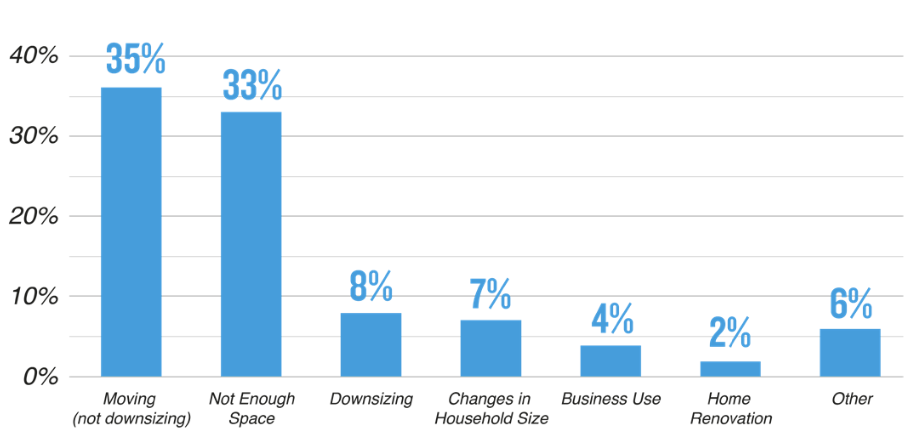The Opportunity in Self-Storage
The self-storage industry has changed a lot over the past few decades, while serving societal needs in both down markets and up. Although it has been seen previously as one of real estate’s many “spoke” industries, we believe that self-storage is becoming a “hub” in its own right.
The Evolution of Self-Storage
A fragmented industry that better serves customers now presents opportunities for economies of scale.
Storage for Everyone
Storage serves common needs at every stage of life.
Industry Economics
Self-storage has shown both resilience across market cycles, and attractive development and operating economics.
The Future of Self-Storage
We believe the six factors below point to continued industry growth.
“Storage demand remains extremely resilient, enabling operators to push both street rates and renewal rates while maintaining occupancy.”
Yardi Matrix, National Self Storage Report, June 2022
The Evolution of Self-Storage
Self-storage has evolved from a local mom-and-pop business into a sophisticated, national commercial real estate sector that through its growth has driven utilization in the United States by becoming a necessity to many Americans.
First-Generation Self-Storage
First-generation self-storage is characterized by single-story buildings without climate control, frequently located in rural areas. These facilities have a simple design and limited technology, including limited security features. They typically have local management, rather than being part of a larger brand.
By contrast, fifth-generation self-storage has a lot to offer communities and consumers. These multi-story, climate-controlled businesses are conveniently located in dense and growing markets. They offer not only the beauty of modern design but also the advantages of modern design and technology, including high security and 24/7 access. They are professionally managed by experienced operators with national reputations.
Fifth-Generation Self-Storage
This evolution has brought new opportunity for developers, as self-storage businesses find greater welcome and profit, rather than facing the NIMBY-ism of the past. In addition, developers are able to use standardized architectural approaches, allowing for greater consistency in outcome and economies of scale.
Storage for Everyone
Source: “Self-Storage: From Spoke to Hub.” SAFStor.
In 2005, the US had 113 million households, and 5.5% (or 6.2 million) were using self-storage. Today, we have 125 million households, and 9.4% (or 11.5 million) are currently using self-storage.
Thus, over the next 20 years, assuming about 10% growth in households, we could potentially expect to see approximately 20 million households using self-storage. This has significant ramifications for new levels of occupancy and potential rent growth.
Items in Storage

Storage Use by Demographic

Self-storage provides economical “space” options for…
- Gen Z’s and Millennials (Ages 19-42) living in small urban apartments
- Gen X households (43-58) decluttering suburban homes
- Baby Boomers (59-77) downsizing into retirement residences
In recent years, entrepreneurs looking for cheaper storage have gradually adapted to self-storage, and many individuals are using self-storage solutions to adapt to working from home.
Self-storage responds to various storage needs that arise from life changes and events. Whether moving, downsizing or adopting a more flexible lifestyle, people are increasingly using self-storage to help them adapt to changing spaces and needs.
Reasons for Using Self-Storage

Industry Economics
Of Service in Any market cycle
During economic boom times, self-storage provides the space for inventory management by businesses and excess purchasing by consumers. In leaner seasons, it allows people to downsize or otherwise access cheaper real estate than their own homes. The industry’s responsiveness to society’s needs in every market cycle may explain why it has thrived in times when other real estate sectors have not.
Favorable building and operating economics
By 2000, it became clear that building costs in self-storage were 35% less than traditional retail, office or multifamily, but rents per square foot were similar. In addition, self-storage businesses annually spend only 3-5% of net operating income margins on capital expenditures, as compared to a range of 10-25% in the multifamily, industrial, office, and retail sectors.
Finding Opportunity in Industry Fragmentation
Despite considerable M&A and consolidation, the self-storage industry remains highly fragmented, with 78% of facilities controlled by owners of three or fewer facilities. This fragmentation offers the opportunity for more sophisticated players to amass scale and emerge as industry leaders.
Previously overlooked
Traditional real estate “hubs” have been considered office buildings, multifamily dwellings, industrial, and retail spaces. Over the past twenty years, “spoke” industries and specialty sectors such as cell towers or life science buildings have garnered more attention. Self-storage has long been considered a spoke sector, but we believe its growth and evolution make it more similar to the traditional hubs.
The Future of Self-Storage
Six reasons we believe the industry will continue to growCOVID-19 | The Shift to Work-From-Home
The pandemic caused offices to shift to work-from-home, which increased demand for self-storage from both businesses and households. Businesses, looking to cut costs on the rental of empty office spaces, increased their usage of storage. The resulting savings, as well as the need for financial resilience to other pandemic-related economic pressures, have continued to incentivize work-from-home arrangements and the use of storage. Workers have also increased their usage of self-storage to make space for their home offices.
Generational Shifts
The self-storage industry is also growing because of the various shifts taking place between the generations. Baby Boomers are now retiring and settling down. This means that they will have to live on limited incomes as they battle the increased costs of living. Many will choose to downsize, and this results in an increased demand for storage space. In the Millennial and Gen Z spheres, the rapid shift to urban centers, where living spaces are small and expensive, increases the demand as well, as residents opt for self-storage spaces rather than using their homes for long-term storage. All of these shifts are amplified by increased housing costs in the post-pandemic era.
Security
Modern storage facilities provide excellent safety and security, including in comparison to most homes. This applies both to theft and damage prevention: Self-storage facilities often have pass-coded gates and/or security guards on duty 24/7. Improvements in building styles and technologies allow for climate-controlled environments that better preserve fragile items, while also keeping them away from potential damage from household activity.
COVID-19 | Additional Storage Space
In the residential sphere, almost 10% of all homes rent self-storage spaces. When the economy is doing well, people love to collect goods and therefore need more storage space. When the economy is doing badly, people wish to downsize and therefore need storage space. The pandemic added complexity to these dynamics, as quarantined populations shifted to online shopping, not only to fulfill ordinary needs but also as a form of “retail therapy.” The increase in online shopping resulted in an increased need for storage.
Employment Migration
Rapid employment boom and bust cycles in the pandemic and post-pandemic era have led to an increased willingness among workers to take on jobs that require relocation or frequent travel. These life changes (like others such as marriage, divorce, entering or leaving college, etc.) often are facilitated by self-storage.
Attracting Capital
Over the course of economic cycles and economic shocks, the self-storage industry has proven to provide investment stability and outperformance. It continues to do well and grows in both level and diversity. Most early investments were made by high-net-worth individuals and REITs. Now, however, larger pools of capital such as private equity and insurance firms are also beginning to make investments. The industry has also proven attractive for investors with ESG considerations, as self-storage facilities have a relatively low environmental impact due to lower-than-average energy, water, and waste usage, as well as fewer people spending prolonged periods on-site on a regular basis.
Why New Development?
Not all self-storage builders specialize exclusively in new developments—but development can have many advantages.
Better Buildings
- Attractive buildings that enhance their neighborhoods.
- Construction materials consistent with the latest standards and environmental considerations.
Better for Customers & Communities
- New builds keep in mind customer and community needs, such as retail frontage, professional services, meeting spaces, or the needs of light industrial customers.
- New site selection ensures the best current and future location for a given area, including current and potential future zoning considerations.
- A more consistent and reliable customer experience, with buildings of similar quality, age, and size across the business.
Better Profitability
- New development has higher rents, higher margins, and lower up-front CAPEX.
- Institutions can acquire a bundle of purpose-built, “turn-key” operations in a single transaction.
Learn More
For more information or to request access to the investor portal, email us at: info@safharborfund.com

